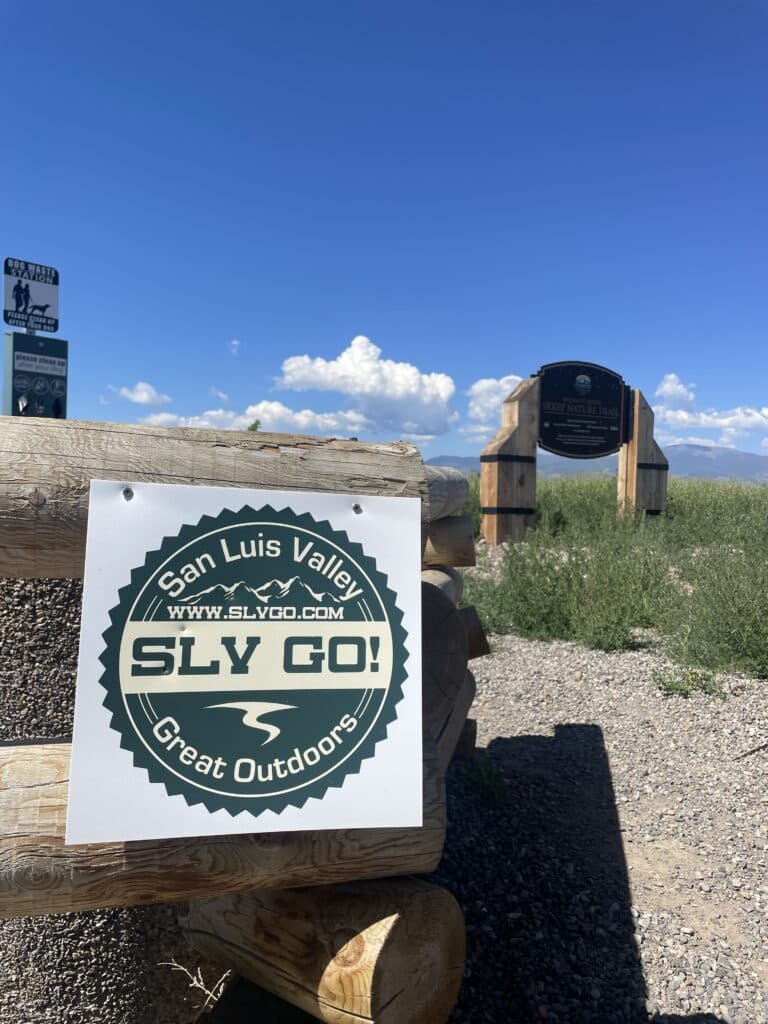By Chris Perkins, Vice President of Programs
As I sat quietly in a small conference room in Monte Vista’s City Hall, a four-hour drive from Denver, waiting for a group of local stakeholders to arrive for a field tour of their outdoor recreation infrastructure projects, any doubts about how I would be welcomed were erased when Gigi Dennis, City Manager, walked in, shook my hand warmly, and extended a green canvas bag in my direction. “We’re so glad to have you in Monte Vista. I hope you like potatoes.” The Colorado potato cookbook inside—indicative of Monte Vista’s long history in agriculture—was the first mark of the community pride I would experience again and again over the next 24 hours in “Monte,” one of America’s shining examples of community visioning and economic diversification around outdoor recreation.
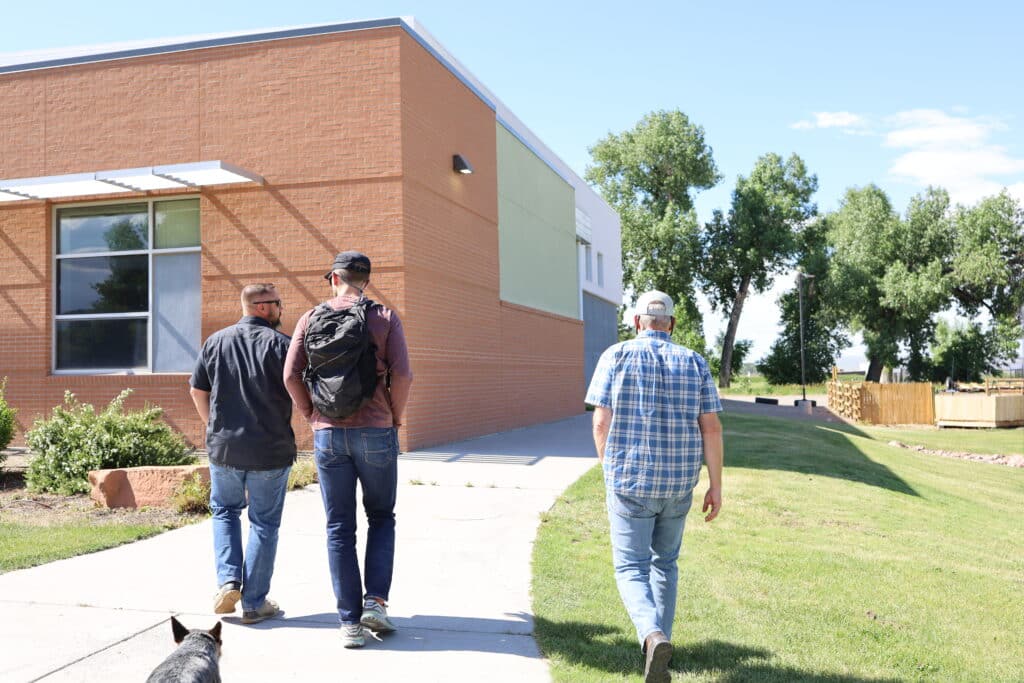
Photo: Maddy Ahlborn, San Luis Valley Great Outdoors
Background
I was there to do new research for ORR’s Rural Economic Development Toolkit, a widely acclaimed resource to help communities diversify and strengthen their economies and communities through outdoor recreation. Monte Vista was selected for the most recent cohort of the Recreation Economy for Rural Communities (RERC) program, an interagency partnership between US Environmental Protection Agency (EPA), USDA Forest Service, Appalachian Regional Commission (ARC), and Northern Border Regional Commission (NBRC).
Over two years of the program, 300 rural communities from across the United States have applied, indicating widespread demand to tap into the benefits of this fast-growing sector, valued recently at $1.1. trillion by the U.S. Department of Commerce’s Bureau of Economic Analysis. ORR also provided Monte a $10,000 grant in 2023 to build a bilingual marketing toolkit, revive their website, and create a social media timeline to share work and upcoming events.
Monte Vista and SLV GO!
Monte Vista is a small community with deep roots. The city is less than 5,000 people, with 2/3 being people of color, mostly Hispanic. The median household income in most recent data was $44,982, compared to the national average of $69,021. Known historically for sandhill cranes, potatoes, and ranching, Monte sits at the center of the San Luis Valley, a land area the size of Connecticut with 50,000 people.
San Luis Valley Great Outdoors (SLV GO!) is critical to Monte Vista’s success. SLV GO! works as a backbone organization to activate beloved outdoor spaces across the Valley for community health, economic development, cultural retention, and a continued conservation legacy. For cities like Monte Vista with only a handful of staff wearing many hats to support the community, organizations like SLV GO! are critical for vision crafting, community engagement, grant writing, and outdoor infrastructure development and maintenance. For example, SLV GO! was the technical lead for the RERC grant process and a new proposal for the U.S. Environmental Protection Agency Community Change grant program, as well as several other successful initiatives and infrastructure projects within the community.

Monte Vista’s RERC Stakeholder Group.
Transforming the Community through the Lariat Ditch
After greetings, we packed into shared vehicles and drove to the west side of town to learn about the Lariat Ditch project, a primary goal of Monte Vista’s RERC Action Plan. As I watched water travel slowly through a nondescript earthen trench surrounded by grasses, I learned that this modest ditch has long been a vital artery of the town’s agricultural needs, but loses 30% of its water to evaporation. In a time of water scarcity across the West and for an agricultural industry highly reliant on access to irrigation, such losses are significant.
City Planner DJ Enderle, a veteran, parent, and outdoor advocate, painted the picture for me of the community’s vision: “We’re going to pipe this entire ditch to reduce water loss, and cover it with a brand-new paved pathway for outdoor recreation across town.”
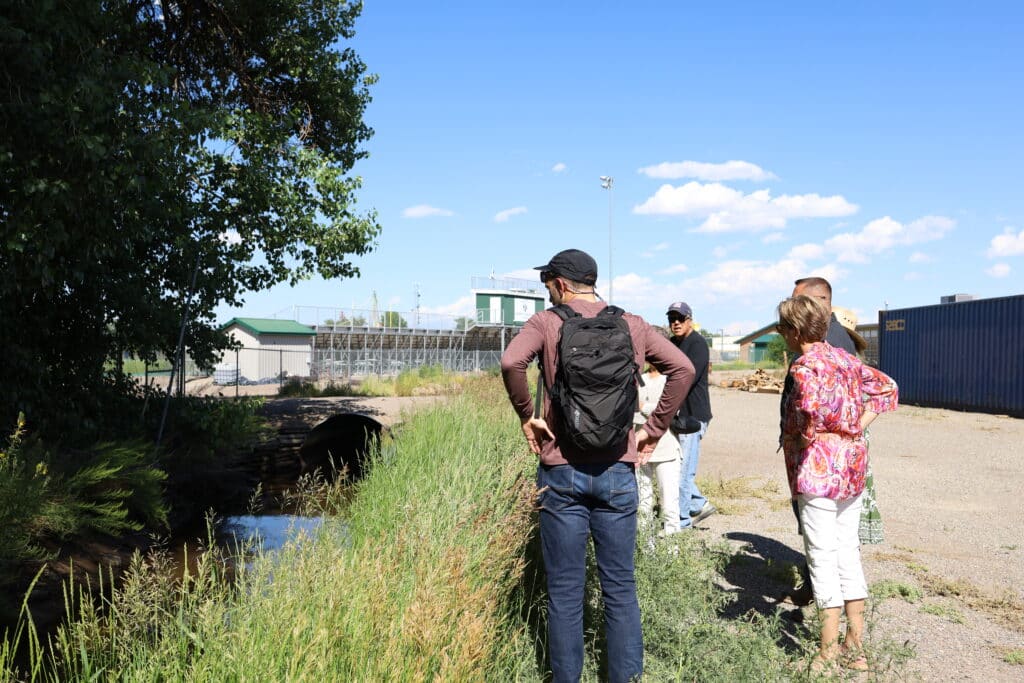
Photo: Maddy Ahlborn, San Luis Valley Great Outdoors
As I looked up and saw the high school football field bleachers nearby, the project’s significance suddenly clicked. This recreational pathway for biking, running, walking, and other mobile activities would act not just as a protected arterial from vehicular traffic, it would transform the community entirely. “We’re building a connection between the west and east sides of Monte Vista,” said Enderle. “For families wanting to make trips to the grocery store, for kids to be able to be kids, for the community to get outside and stay healthy—that’s major.”
Community Input
In rural communities wanting control over their futures and the pace of change, ambitious new projects like the Lariat Ditch can feel daunting. I learned that Enderle and his partners at SLV GO! including Mick Daniel, Annie Altwarg, Madeleine R. Ahlborn, Dani Robben, and Patrick Ortiz prioritize community input throughout the process.
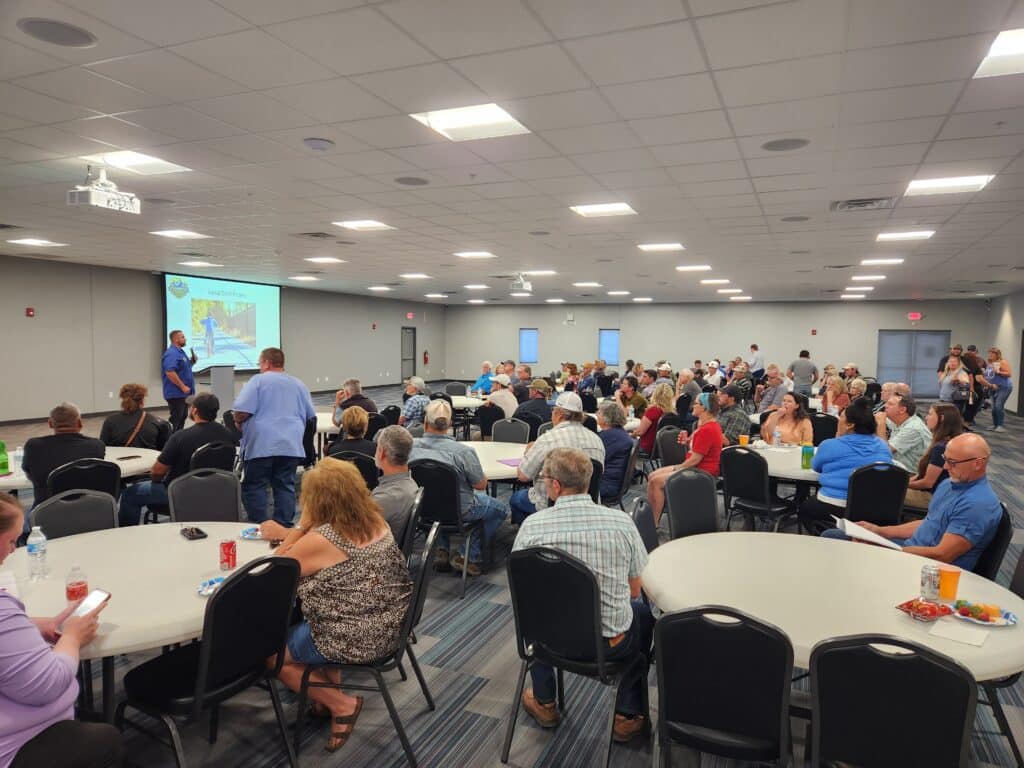
DJ Enderle leads the community in a discussion about the Lariat Ditch (photo: Maddy Ahlborn)
As noted in our Toolkit, any recreation project in a community must answer three core questions:
For community members, “How will this benefit us, not just visitors?”
For conservation partners, “What’s in it for the environment and our wildlife?”
For local officials, “Why is this good for our economy and culture?”
Enderle’s approach to collecting community input on the Lariat Ditch project sets the standard for other communities to consider in their own efforts:
“We visited every house along the ditch, delivered door hangars and letters explaining this project, advertised in the paper, and did radio spots and other public announcements,” said Enderle. “We wanted to make sure that our community was involved in this effort from start to finish. And when discussions picked up on Facebook about what we were doing, I took their concerns to heart and did research to present to the public.”
A recent public meeting on the Ditch project drew 100 people to a community forum, an almost unheard-of rate for this small town. While most comments were favorable toward the project, some detractors shared concerns about new trail activities next to their homes and safety concerns.
Thanks to his degree of preparation and empathy with these community members’ concerns, Enderle thoughtfully addressed their comments. “We had people who were detractors who got more context and learned more about how this fits into our community’s vision and flipped sides,” said Enderle. “Of course, we had some people who were still opposed. That’s what makes a community a community—we put our heads together to take on difficult challenges because we care. Seeing this project engage that level of participation from the community—that’s inspiring for us. People want to be involved.”
Dedicated Collaboration
In the evening, I experienced this buy-in firsthand as Monte Vista’s core RERC stakeholders came together at the Pivot Public House to share perspectives on the progress to date. As I looked around the room, I noted the strength and sector diversity of the gathered coalition.
In addition to city and SLV GO! staff, we welcomed representatives from the Bureau of Land Management, USDA Forest Service, a Rural Liaison for Colorado Office of Economic Development and International Trade, Monte Vista’s mayor, a Rio Grande County Commissioner, an AmeriCorps intern, a staffer for U.S. Senator Michael Bennet, a Colorado State Representative, an SLV GO! “Ambajador” who connects the local Hispanic community to the outdoors, a local journalist, and other regular community participants in the RERC program. This robust public-private coalition helps ensure transparent lines of communication between core organizations in Monte Vista and ensures early buy-in to take on challenges together.

Perkins with Monte Vista Mayor Dale Becker (Photo: Mick Daniel)
We discussed the ins and outs of the strengths of Monte Vista’s efforts and the challenges and barriers that still remain.
Among the strengths of Monte Vista’s effort that stood out during my visit:
The core leaders at each leading organization are optimistic. They may not agree on every approach, but there is a general positivity toward change and getting things done.
A backbone organization provides critical leadership. San Luis Valley Great Outdoors helps in many ways, whether by crafting a strategic direction for the community, prioritizing residents’ public health, planning meetings, connecting people to resources, and importantly, writing grants. Other communities in the region are eager for their support.
Funding creativity is paramount. For a community with limited public resources, Monte Vista has utilized grants from the U.S. Department of Transportation Multimodal Project Fund, U.S. Economic Development Administration through the State of Colorado, Great Outdoors Colorado (GOCO), U.S. Environmental Protection Agency, as well as many private grantors and foundations.
Showing wins along the way. Community members need to see that something is happening before they commit to it. For communities with legacies of disinvestment, there can be an ingrained skepticism about new initiatives. Monte has built support for its efforts with public wins like the Ski Hi Events Center, Skate Park, three public murals, and Veterans Park projects.
Building projects that address multiple community goals. The Lariat Ditch is not just a piece of recreation infrastructure, it is a tool for community health, social connectivity, pedestrian safety, agricultural production, and water conservation.
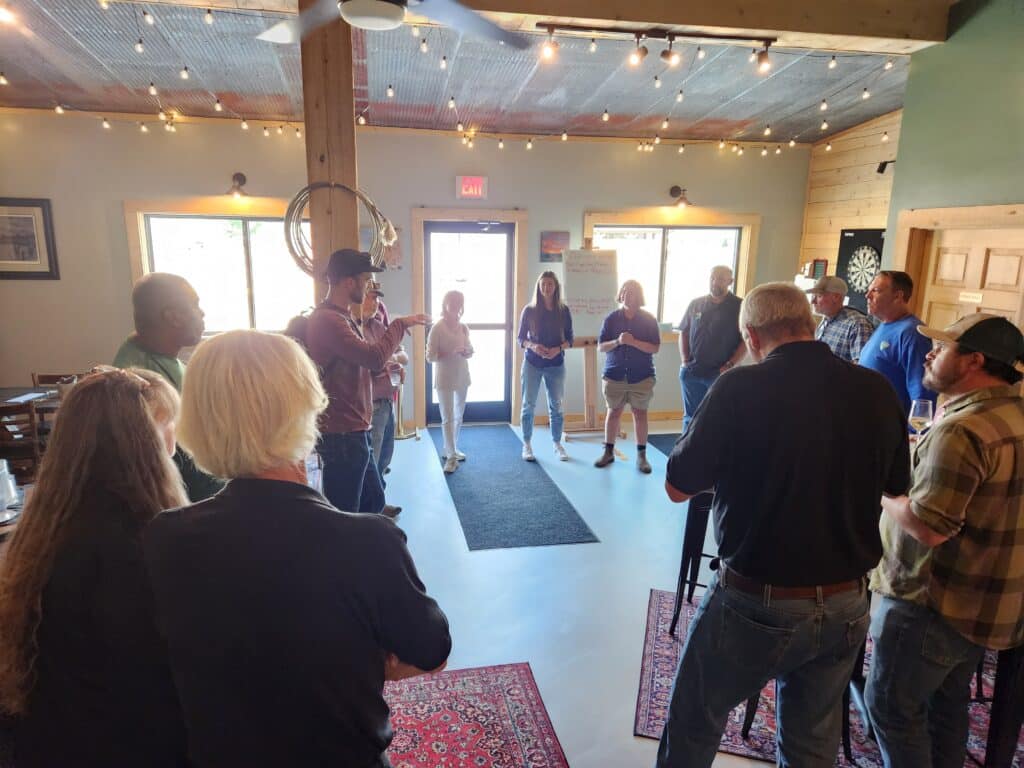
Perkins with local stakeholders (Photo: Maddy Ahlborn)
Challenges and barriers that were identified include:
Residents want to see Monte Vista move forward, but the question is always, “at what cost?” Fiscal responsibility is a core priority for the community.
Layers of bureaucracy for grants. For under-resourced rural communities like Monte Vista, federal, state, and private grant requirements and paperwork can be a high bar to cross for community leaders with limited bandwidth. Participants discussed the potential for a federal “frontier” classification below “rural” that would better account for the needs of communities like Monte Vista or grant programs that would fund an entire project cycle from planning to execution.
Day 2: The Plan In Action
We took the morning of the second day to visit several recreation sites core to Monte Vista’s goals and vision. As we traveled from the Ski Hi Events Center and Rodeo Grounds to Home Lake, Shriver-Wright State Wildlife Area, and Skeff Nature Trail, we saw the opportunity for Monte Vista’s RERC priorities to take flight.
With each stop, I envisioned Monte Vista’s core priorities (linked on page 6 of their RERC Action Plan): Recreation Opportunities and Access for All, Physical Connections, Safety, and Walkability, Increase Downtown Amenities and Vibrancy, Business and Economic Development, and Stewardship and Authenticity. Each piece of recreation infrastructure would play a meaningful role in securing benefits for the community.
Closing Thoughts
I drove north on U.S. 285 with Monte Vista in the rearview and recalled the lasting image from the morning: Mick Daniel, SLV GO! Executive Director and Gigi Dennis, Monte Vista City Manager, in thoughtful conversation at the Skeff Nature Trail trailhead. The two are different in certain ways: Daniel, an endurance mountain biker who puts upwards of 3,000 miles on his bike annually and has more than 30 years of experience in trails and outdoor recreation, and Dennis, a humble public servant who served in the Colorado State Senate and as Colorado Secretary of State as well as appointed by President George W. Bush as the Colorado State Director for USDA before her current role.
In their work together for Monte Vista’s future, I know that Daniel and Dennis don’t always share the same perspective, but they are bought in. The two of them are bound by optimism and a belief that Monte Vista’s best days are ahead. Daniel’s patience with the realities of small-town government and Dennis’ willingness to show up wholeheartedly to participate in RERC is a big part of why it works; they are each willing to step into one another’s shoes to build a better vision that works for everyone. In my mind, this relationship, and the RERC process more generally, is what time outdoors enables: optimism, collaboration, and collective belief in shared goals.
I hope to be back in Monte Vista soon to see their next accomplishments in person and help cut the ribbon on the Lariat Ditch project. Next time, however, I’ll show up with scalloped potatoes.
Outdoor Recreation Roundtable works on society’s pressing issues through access to the outdoors and building the $1.1 trillion dollar outdoor recreation economy.
This visit was supported by The VF Foundation, a long-time supporter of ORR’s efforts to research rural economic development through outdoor recreation.
Read more coverage about the visit in the Alamosa Citizen.




